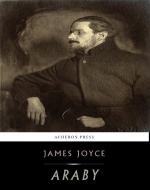|
This section contains 2,621 words (approx. 9 pages at 300 words per page) |

|
SOURCE: “Joyce's ‘Araby’ and Imaginative Freedom,” in Research Studies, Vol. 44, No. 3, September, 1976, pp. 183–88.
In the following essay, Rosowski views the primary conflict in “Araby” “not between the child's and the adult's visions, but between psychological and factual realities.”
Readers have long recognized the importance of “Araby” in Joyce's canon. The third and final story of the childhood phase of the Dubliners (before adolescence, maturity, and public life), “Araby” portrays an early stage of the struggle that Joyce develops later in A Portrait of the Artist as a Young Man and in Ulysses. The story is viewed usually as portraying the initiation of a young boy: the boy moves from the child's world of romance to the adult world of reality and, in the final lines, to disillusionment as he realizes himself trapped in “the hell of the world of reality.”1 Yet basic problems remain unresolved with this interpretation...
|
This section contains 2,621 words (approx. 9 pages at 300 words per page) |

|


